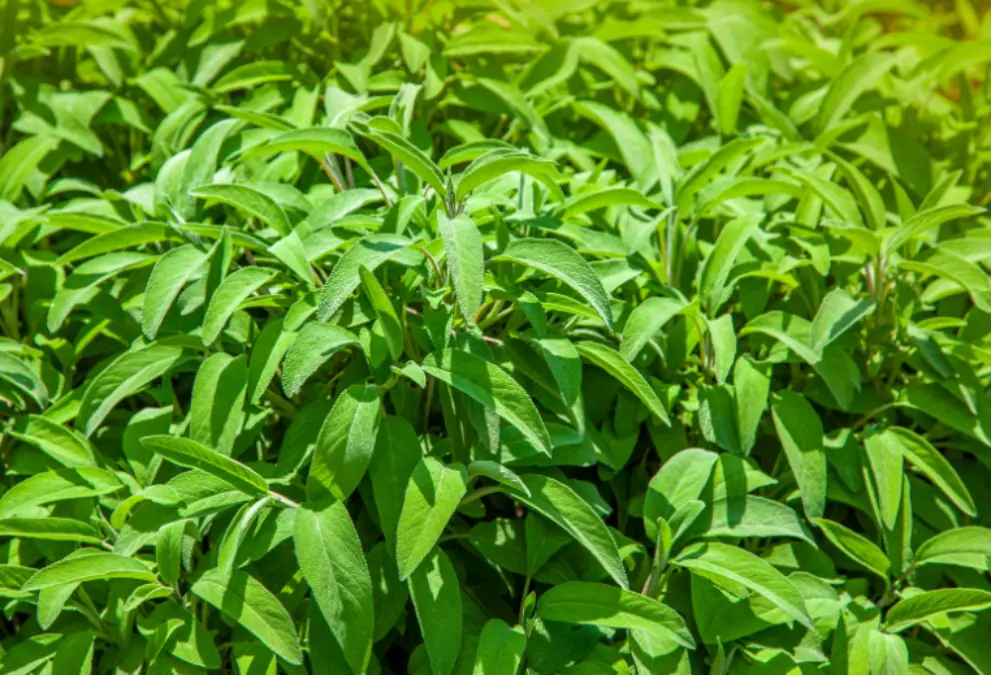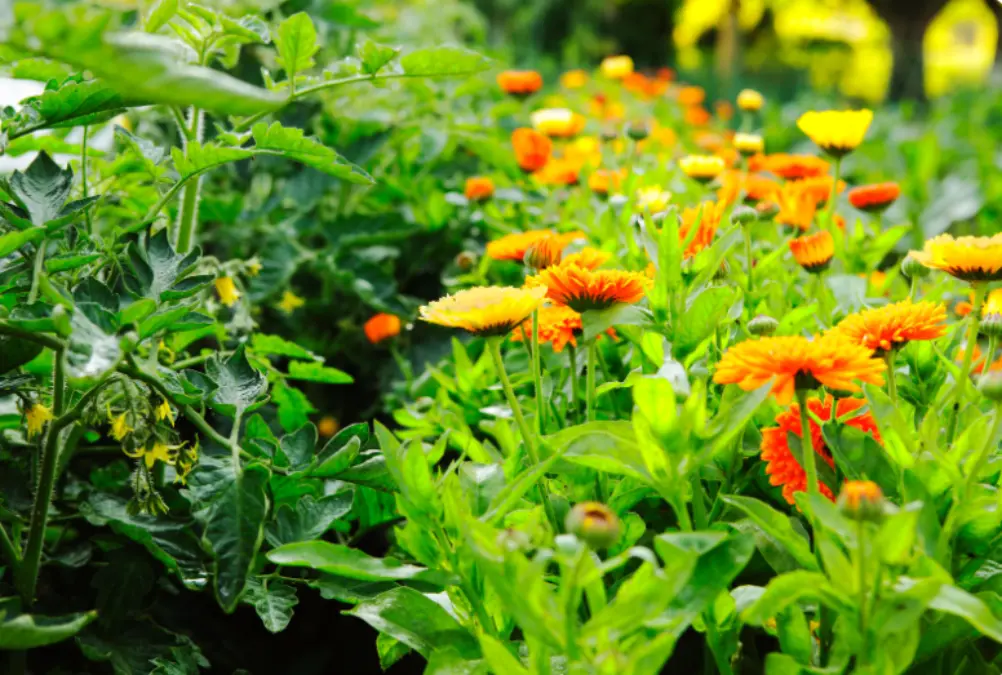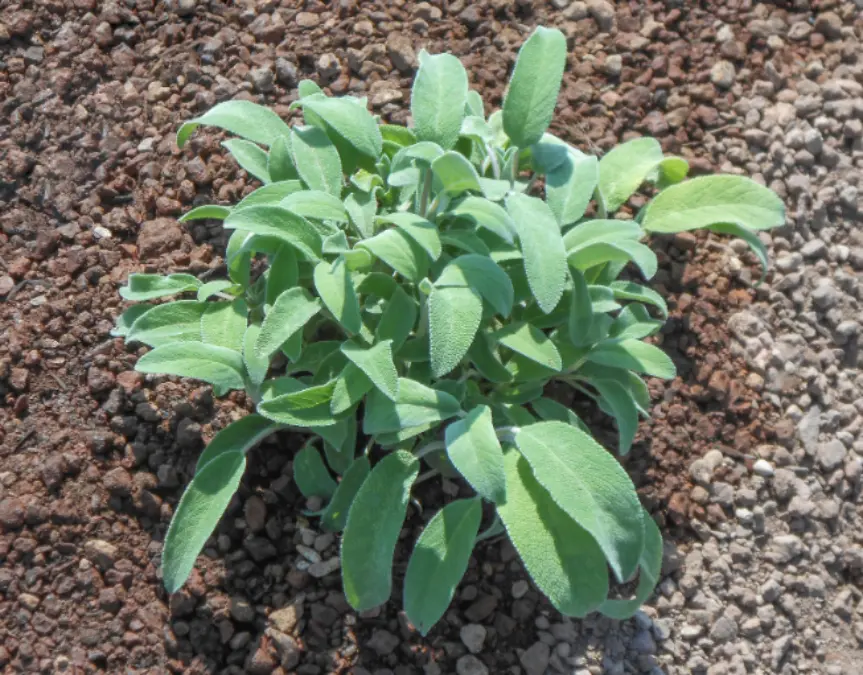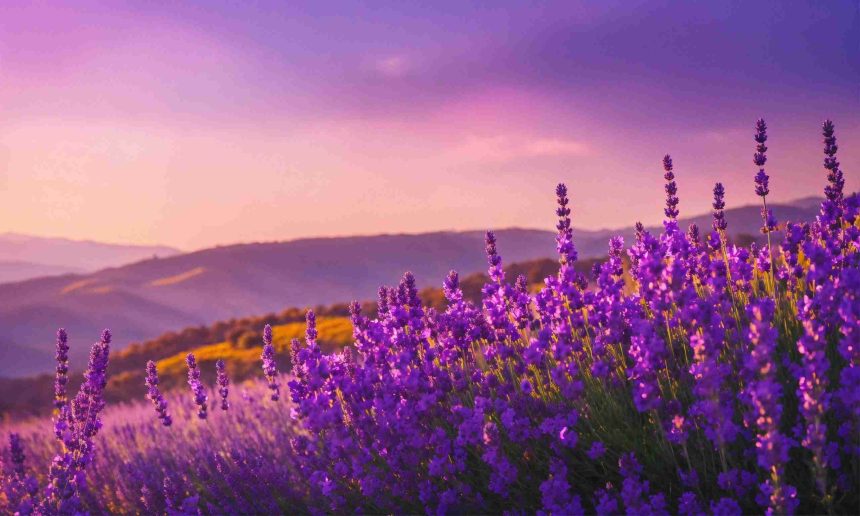Sage is a wonderful herb to grow in the garden – it’s hardy, low-maintenance, and has so many uses in the kitchen. But like any plant, sage can benefit from being planted with good companion plants. Companion planting is the practice of growing different plants together that can help each other thrive. The right neighbors for your sage can deter pests, attract beneficial insects, improve soil quality, and maximize use of garden space
Companion planting is based on the idea that certain plants can benefit others when grown together. The science behind companion planting is debated, but gardeners swear by time-tested plant pairings that they’ve seen boost harvests and deter pests in their gardens. Planning your vegetable garden thoughtfully using companion planting guidelines can make your job as a gardener much easier!
Why Use Companion Plants?
Companion planting isn’t an exact science. Instead of rigorous testing, the practice relies more on gardener wisdom passed down over generations. But many plants simply seem to do better with thoughtful neighbors nearby.
Here’s why companion planting deserves a central spot your gardening plans:
Pest Control
Some plants naturally repel damaging garden pests. Pair pest-susceptible plants like cabbage with these plants called “repellent plants” to naturally protect them. Certain repellent plants also attract beneficial insects that prey on detrimental garden bugs.
For example, oregano’s strong scent discourages cabbage moths. And dill’s umbrella-shaped flowers draw wasps that feast on aphids and other pests. Sage itself produces an oil that deters some insects. Make your garden work for you with smart plant pairings!
Improved Growth
Beyond pest control, some plants simply seem to grow bigger and stronger when planted next to certain companions. This may be due to complex chemical signaling between roots. Tomatoes and basil are a classic example of growth-boosting companion plants.
Efficient Use of Space
Companion planting allows you to use every square inch of your vegetable garden efficiently. Combining plants with different growth habits, nutrient needs and harvest times lets you squeeze more crops into less space. You can even opt for vertical gardening, with vining plants growing up tall companions.
Added Benefits
Some companion plants provide additional bonuses beyond pest control and improved growth. For example, pairing fragrant herbs like sage boosts their essential oils through synergistic relationships. And combining blooming plants creates a pollinator paradise, encouraging bees to frequent your entire garden.
Best Companion Plants for Sage

Rosemary
Fellow culinary herb rosemary makes an ideal companion for sage. With it’s small blue flowers and piney, lemon-mint scent, rosemary is perfect for planting next to sage along garden beds and borders. Plus, rosemary helps repel some cabbage pests like the cabbage moth.
Both rosemary and sage thrive in well-drained soil and need at least six hours of sunlight per day. Take care not to overwater your herbs, as the key to flavorful rosemary and sage is a little garden stress. Mulch around plants to help retain soil moisture and prevent weeds.
Thyme
Another Mediterranean herb, thyme partners beautifully with sage in an herb garden or vegetable patch. Like rosemary, thyme features needle-like foliage and a preference for dry conditions. Thyme’s tiny nectar-rich purple or white flowers also attract pollinators during peak bloom.
Interplant sage and thyme in full sun, spacing plants 18-24 inches apart. Keep soil on the dry side for best growth. For variety, grow different types of thyme like lemon, creeping or wooly thyme alongside your sage. The two herbs nicely balance each other when harvested for cooking.
Marigolds
No companion planting lineup is complete without marigolds. These brightly colored annuals pump out a natural biochemical from their roots that suppresses nematodes and other garden pests. They make great neighbors for protecting more delicate vegetables.
Choose marigolds with especially high levels of protective compounds like the ‘Crackerjack Mix’. Make sure to plant marigolds throughout your garden, not just next to sage. The more marigolds the better for reducing pests garden-wide!
Beans & Peas
Bean and pea plants enrich surrounding soil as they grow thanks to a specialized bacteria attached to their roots. This bacteria converts nitrogen already in the soil into a plant-available form through a process called nitrogen fixation.
After bean and pea plants finish fruiting, cut them down but leave the nitrogen-fixing roots in place. Then plant sage or other nitrogen-loving plants in that spot. They’ll benefit from the nitrogen leftover from the legumes.
Carrots & Onions
While most companion plants improve growth or deter pests, carrots and onions help disguise sage from some insect pests. That’s because their strong scents mask sage’s aroma, making it harder for pests to locate. Onions, leeks and chives make great neighbors for keeping sage safer.
For best results, interplant onions and carrots throughout your garden instead of only near the sage. Try bunching green onions, storage onion bulbs, leeks, garlic and shallots alongside carrots with sage and other herbs.
Best Supporting Players

Some classic kitchen garden crops make great “supporting players” next to any herbs, including sage. Try tucking these edibles in open spots nearby:
- Lettuce
- Spinach
- Kale
- Swiss chard
- Beets
- Turnips
- Radishes
- Parsley
- Oregano
- Dill
These fast-growing cool weather crops fill space efficiently while benefiting from the pest protection sage and other aromatics offer. Plus, they make harvest-time salads and sides delicious paired with homegrown sage.
Tea Herbs
Expand your homegrown tea blends by planting tea herbs near sage. Mint, lemon balm, lavender, chamomile, stevia and holy basil all blend nicely with sage’s peppery flavor. These herbs attract pollinators and repel certain pests in the garden too.
Create a soothing evening tea with lemon balm, chamomile, lavender and sage. Or make an invigorating midday tea with sage, mint, stevia and holy basil. Let your tea herb companion plants mingle for the best flavor.
Plants to Avoid Near Sage

When it comes to sage companion planting, certain plants spell trouble. Steer clear of these plants when choosing sage’s neighbors:
Rue
This herb looks pretty with blue-green foliage and yellow flowers, but it’s one to avoid planting beside edibles like sage. Rue releases chemicals that inhibit the growth of nearby plants. It can stunt and discolor any vegetables or herbs attempting to grow in it’s vicinity.
Wormwood
Like rue, wormwood negatively impacts plants growing within about three feet of it’s taproot. So keep sage and other herbs a safe distance away. However, wormwood does deter certain insect pests. So you can grow it as a decorative border if you leave enough space.
Cilantro
Here’s a surprise pairing to avoid in the garden. Cilantro and sage don’t make ideal companions, as cilantro gives off a chemical that slows sage’s growth. Keep these two herbs separated for best harvests.
Other Sages
While different herbs play well together, multiple sage plants competing for resources don’t mix. Separate your garden sage, tricolor sage, pineapple sage and any other salvia varieties by at least a few feet. Crowding causes the plants stress and diminishes productivity.
Getting Started with Companion Planting

As you select sage’s ideal neighbors, keep these companion planting tips in mind:
Start Small
Observe how your plants interact before attempting large-scale companion plantings. Try a few combinations in containers first. Make adjustments before transplanting combinations into garden beds.
Pay Attention to Heights
Choose sage companions with growth habits similar to or complementary with sage. Avoid tall plants that will shade out lower-growing sage. But do take advantage of vertical spaces by pairing sage with climbers like peas and pole beans.
Give Roots Space
While some plants thrive in close proximity, others need their space. Avoid crowding sage, instead allowing at least 12 inches between plantings. Dense root zones cause plants to compete for nutrients and water.
Work With the Site
Tailor sage companion plants to your garden’s conditions. Match plants with preferences for sun exposure, soil needs and preferred soil moisture. Group plants with high or low water demands to make irrigation easier.
Extend the Season
Choose short-, mid- and long-season crops to harvest companion plants on a staggered schedule. Avoid grouping early- or late-season plants together. Overlap bloom times to feed pollinators for longer.
Try New Combinations
Part of the fun of companion gardening lies in experimentation! Keep testing promising new pairings and enjoy observing the results. Tweak your companion plantings each season to build an increasingly thriving garden.
With the right companion plant pairings, your sage will flourish! Use these suggestions as a starting point, amending as needed based on sage’s performance in your unique garden conditions.
Companion Planting Tips for Other Popular Herbs
With a solid plan in place for companion planting sage, try expanding to incorporate ideal pairings for other favorite herbs too.
Companion Plants for Rosemary
- Sage
- Beans
- Carrots
- Cabbages
- Marigolds
Mint Companion Plants
- Cabbages
- Tomatoes
- Peas
- Lettuce
- Broccoli
Companion Plants for Oregano
- Tomatoes
- Asparagus
- Squash
- Carrots
- Cabbages
Dill Companion Plants
- Tomatoes
- Broccoli
- Cabbages
- Lettuce
- Onions
Build a thriving kitchen garden by interplanting herbs with compatible vegetable crops. Refer to individual herb requirements to formulate custom companion planting schemes for your garden’s conditions.
FAQs
Yes, planting sage with other culinary herbs makes an excellent combination. Some of the best herb companions for sage are thyme, rosemary, dill, parsley, oregano, basil and mints. Be sure to plant different types of sages a few feet apart to prevent overcrowding.
The keys to success with companion planting are paying attention to sun exposure needs, watering needs and spacing requirements. Group plants appropriately so taller plants don’t end up shading out lower growers like sage. And avoid planting sage right next to plants like cilantro and wormwood that inhibit it’s growth.
Space sage plants about 12-18 inches apart within the garden bed or container. This prevents crowding and gives sage adequate elbow room to reach it’s full bushy size. Make sure to also allow at least 12 inches between the edge of the sage plant and neighboring plants.
A good general rule is to plant sage near other plants with similar growing needs and characteristics. For example, choose sun-loving, drought-tolerant Mediterranean herbs as sage companions. Or pair sage with insect-repelling flowers like marigolds. Observe your plants’ interactions and adjust companions as needed each season.
Enjoy an Abundant Sage Harvest!
Choosing the right sage companion plants leads to greater garden success. Follow these companion planting recommendations for happy sage plants and improved vegetable harvests overall.
Observe how your sage thrives year after year as you thoughtfully populate the garden around it. Soon you’ll have more fresh sage than you know what to do with for flavorful home cooking! Adjust plant placements over time to create positive plant partnerships that continue working season after season.
And don’t forget to enjoy the journey along the way! Gardening should be a fun, rewarding hobby. Make companion planting an opportunity to learn more about the amazing natural world around us. Soon you’ll have your own sage planting wisdom to pass on to fellow gardeners.




